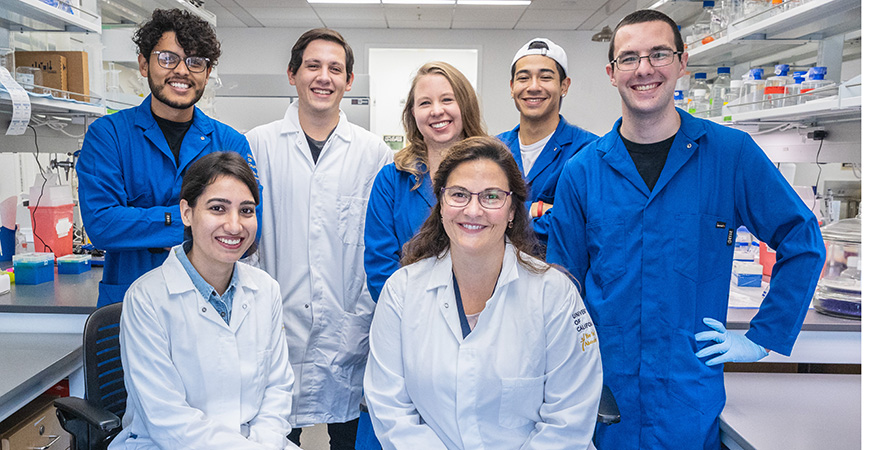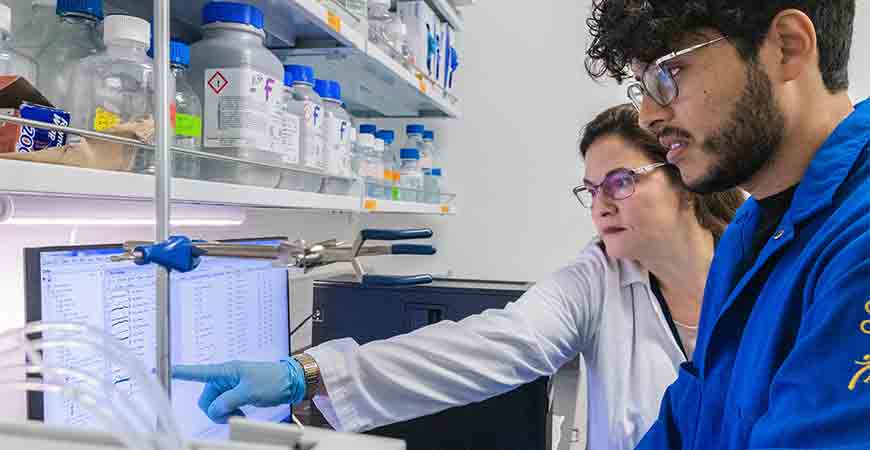
Everyone has inflammation in their body at some point as it is a vital part of the immune system. It’s what happens when white blood cells flow to a wound, whether that is a bruise or a broken bone. Inflammation helps us heal properly and fight infections, but sometimes something in this process goes wrong and inflammation becomes chronic. This is another issue that can lead to serious diseases such as diabetes, arthritis, cancer, heart disease and many others.
Bioengineering Professor Eva de Alba was awarded a National Institute of Health (NIH) R15 grant in June to further examine the molecular functions of inflammation, specifically to study the dynamics, interactions and function of the proteins that cause inflammation to occur in the body.
“We study the molecular aspects of inflammation and, in particular, the onset, so we’re looking at exactly what triggers the inflammatory responses and how those proteins interact with others and themselves,” de Alba said.
It all centers around the inflammasome, a multi-protein complex that activates when damage or infection occur in the body, triggering the inflammatory response. The function of certain proteins within that response is the focus of de Alba’s work.
“The inflammation process is very diverse. It has a wide range of different stimulants that could cause it to react,” explained Pedro Diaz-Parga, a third-year Quantitative Systems Biology graduate student advised by de Alba.

In the inflammasome complex there are three proteins: the sensor, adaptor and effector. The sensor and effector are connected by the adaptor, and within the latter there are two domains tethered by a linker. The length of the linker can make a big difference in how the protein interacts with the other components of the inflammasome.
If the linker is long between the two domains, the protein resembles hunting bolas with two freely moving balls tethered together. If the linker is short, with less space between the two domains, the protein will take on a cylindrical soda can shape with no mobility. The work in de Alba’s lab examines the role that protein dynamics plays in the inflammation process.
“The linker, we think, has an important role in how efficacious this process works,” Pedro Diaz-Parga said. “Our results show that the short linker holds up the capability of the protein to interact, potentially slowing down the formation of the inflammasome complex.”
These proteins form assemblies that tend to grow in size by binding to themselves or similar components, creating long filaments, which are the very essence of the inflammasome complex. The length of the linker can play a role in how fast and what type of filament is formed, and thus can be used by our bodies to manipulate the inflammatory response.
According to de Alba, although the research is in early phases, the results have been very promising.
“This work is important because we can leverage our understanding on inflammasome formation to potentially design therapeutic targets to treat chronic inflammation,” de Alba said. “In fact, based on specific information obtained in our lab, we are currently designing molecules to inhibit the function of the inflammasome adapter.”



